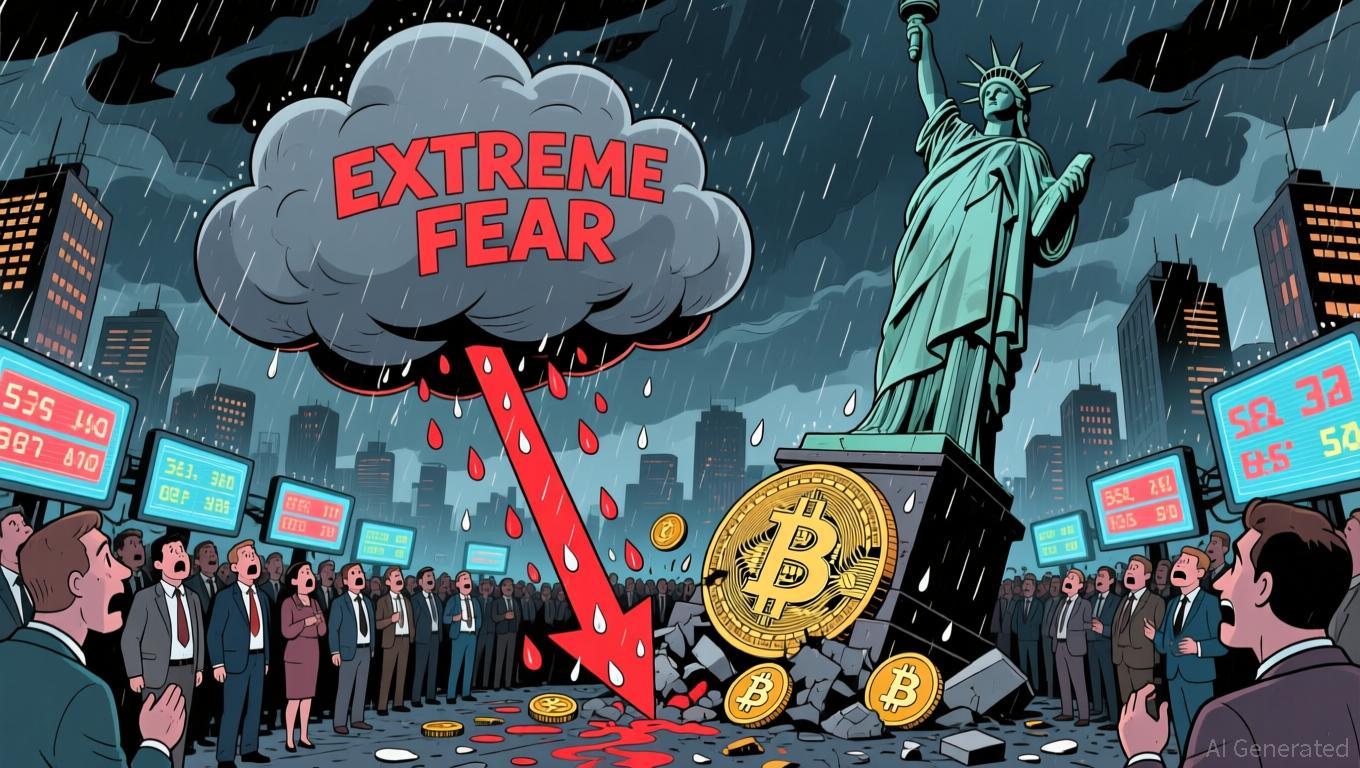SOMI - 411.13% Plunge in 24 Hours as Market Swings Wildly
- SOMI dropped 411.13% in 24 hours, following a 1889.9% 7-day decline and 5703.82% monthly/annual gains. - Technical analysts highlight eroding support levels and heightened volatility amid broad market shifts. - The drop reflects speculative trading patterns and risks, with institutional investors reassessing portfolios. - A backtesting strategy using RSI and moving averages aims to manage volatility through mean-reversion trades.
On September 28, 2025,
Market technicians have observed a significant breakdown in SOMI’s price pattern, with crucial support zones collapsing swiftly. Although the one-month rally had provided some stabilization, the recent 411.13% plunge indicates a shift in momentum. Experts anticipate continued turbulence as investor sentiment remains highly reactive to market news and broader economic trends.
This steep decline has not been linked to any specific event or news related to SOMI itself, but rather to overall market trends and asset repricing. Both investors and traders are now watching closely to see if the token can find a new equilibrium or if further declines are ahead. These recent price swings underscore the difficulties of managing risk in the fast-evolving digital asset sector.
SOMI’s price history demonstrates a cycle of rapid appreciation followed by abrupt corrections, a hallmark of speculative trading. While some analysts continue to debate the token’s long-term prospects, they agree that short-term risks are considerable. The heightened volatility has prompted institutional investors to become more cautious, with many reevaluating their exposure to digital assets.
Backtest Hypothesis
To explore ways to manage SOMI’s price swings, a backtesting methodology has been suggested. This approach utilizes moving averages and RSI indicators to pinpoint optimal buy and sell moments. The premise is that employing a mean-reversion strategy based on these signals could help investors reduce losses during downturns and benefit from recoveries during rallies.
The backtest involves initiating a short trade when the RSI surpasses 70, indicating an overbought market, and closing the position when the RSI drops below 30, signaling oversold conditions. Conversely, the strategy calls for entering a long position when the price moves above the 50-period moving average, and exiting when it falls below this threshold. This combined indicator method is designed to synchronize trades with SOMI’s volatility while aiming to control exposure to abrupt price changes.
Disclaimer: The content of this article solely reflects the author's opinion and does not represent the platform in any capacity. This article is not intended to serve as a reference for making investment decisions.
You may also like
Japan Unveils $110B Stimulus: Major Shift from Fiscal Restraint to Economic Expansion and National Security
- Japan's PM Sanae Takaichi unveils $110B stimulus to combat stagnation and bolster security amid China tensions. - Plan includes tax cuts, utility subsidies, defense spending, and strategic investments in AI, semiconductors , and shipbuilding. - Funded by 14-trillion-yen supplementary budget, with potential expansion to 20-trillion-yen ($133B) as per analyst estimates. - Shift from austerity reflects Takaichi's hardline security stance and response to China's travel advisory over Taiwan remarks. - Impleme

Bitcoin News Update: Bitcoin Reaches $96K Amidst Institutional Interest and Challenges from Regulations and Price Barriers
- Bitcoin surged past $96,000 as buyer accumulation and seller exhaustion drove short-term recovery, though $106,000–$118,000 remains a key resistance zone. - Harvard’s $443M investment in BlackRock’s IBIT highlights growing institutional adoption, contrasting traditional preferences for private equity. - Bitcoin Depot reported 20% Q3 revenue growth but faces regulatory challenges, expanding internationally while projecting Q4 declines due to compliance costs. - MicroStrategy’s Michael Saylor denied Bitcoi

Bitcoin News Today: Bitcoin Faces $62K Drop Threat Amid Fed's Data Silence Predicament
- Bitcoin faces $62K crash risk amid Fed uncertainty caused by U.S. government shutdown's "data blackout" disrupting inflation/labor data. - Post-Nov 13 reopening saw BTC rebound above $102K, but markets remain fragile with 20% decline from October peak despite $140B ETF growth. - Fed rate cut odds dropped to 52% for December, creating volatility as institutions like Harvard Endowment invest $443M in Bitcoin ETFs. - U.S. miners struggle with 37.75% global hashrate share amid lack of federal incentives, con

Bitcoin Updates Now: Crypto Faces a Standstill as Market Anxiety Meets Harvard’s Confident Bitcoin Investment
- Alternative Data's Fear & Greed Index hit record low 10 on Nov 16, signaling extreme crypto market fear and frozen investor sentiment. - Bitcoin fell 5% to $96,000 while CD20 lost 5.8% as profit-taking, liquidations, and liquidity declines accelerated selloffs. - Rising U.S. Treasury yields and central bank uncertainty worsened losses, with Nansen noting "perfect storm" of macro risks and institutional outflows. - Harvard's $443M IBIT ETF investment contrasts current bearishness, highlighting diverging i
